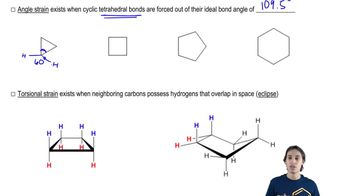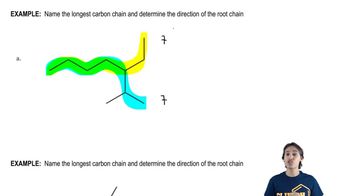Draw a Lewis Structure for each species.
i. CH3OSO2OCH3
j. CH3C(NH)CH3
k. (CH3)3CNO
 Verified step by step guidance
Verified step by step guidance Verified video answer for a similar problem:
Verified video answer for a similar problem:



 6:06m
6:06mMaster How to interpret condensed structures. with a bite sized video explanation from Johnny
Start learning